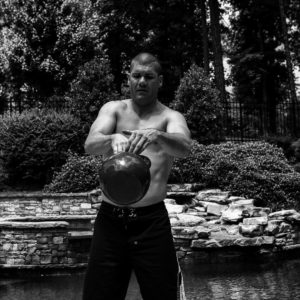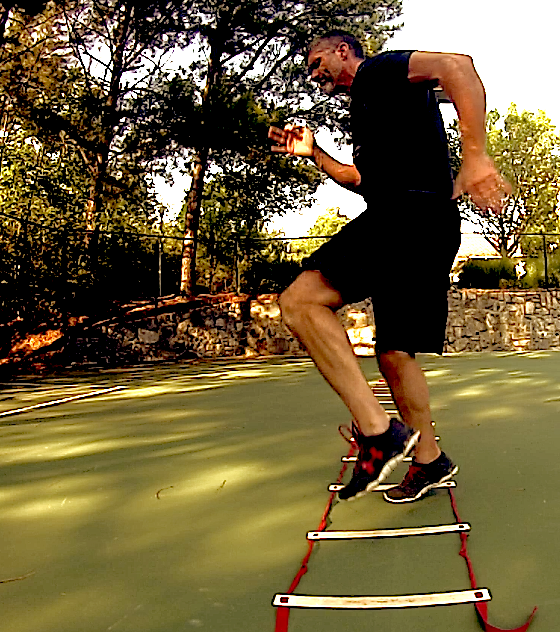
Skillful Conditioning: Quality Work To Rest Intervals & Intuitive Recovery
So I think you’re really going to enjoy today’s article that I pulled from the archives based on skillful conditioning. Part of skillful conditioning is that you need to learn how to also apply intuitive recovery during your training.
In this article I go into detail on that just for you so that you can apply this skill to your training in order to make your conditioning workouts more impactful. Read and apply!
The act of conditioning is a fascinating thing when you think about it. I mean there are so many ways to condition the body. Are you going out for a jog? Do you incorporate sprint work? Are you jump roping? The methods of stress that we can introduce in order to condition us almost seems limitless at times. It may seem like this, but it all boils down to effective work and rest intervals and today I want to dive into discussing this in a bit more detail in order to help you.
What Is Skillful Conditioning?
To me skillful conditioning involves a couple of specific characteristics. First, when I refer to skillful conditioning I’m referring to integrating a form of conditioning that involves some level of coordinated skill and optimal effort. Usually this is some sort of work interval that challenges your coordination, movement, reaction time, and overall body control.
This sort of conditioning may involve jump roping, skipping, sprinting and plyometric variations, or agility drills. One great example of this would be utilizing high knee runs on an agility ladder.
Secondly, you can see the point of performing this is to do so by integrating a certain level of technique and skill. The point is to combine quality run sprint mechanics with good old fashioned effort. You’ve got to work towards being proficient at both in order to achieve optimal results from an interval like this. If you want to learn more about how to do this the way the BRF camp does it you can learn more about it with my 120 Day Functional Fitness program listed at the bottom of this article.
Managing Rest Intervals
So having pointed this out how do you go about managing your rest time? Well the NSCA has clear recommendations on managing work to rest intervals based on intensity and the duration of a given work period. This is based on which energy systems you tap into for a given task or drill. You can check this out in greater detail on the table here below.
As you can see the higher the intensity is in your ATP-PC energy system. Your work, or energy output, is only going to last up to 10 seconds. This is because the ATP-PC is broken down after this 10 seconds of all out effort. Once this energy system is broken down then you will instantly transition into the Anaerobic system.
Now I know what you’re thinking. So how to do you track your rest interval based on intuition? Fortunately I’ve got a great little tip for you right here loaded up and ready to go in the following video.
Of course a stopwatch, or some other timing device is a great way to measure rest intervals, but those things aren’t always necessary as I pointed out here in the video. Of course the key to optimizing your work to rest intervals means that you’re going to have to invest some time practicing and that is the whole point.
The longer I’ve been involved with conditioning the better I’ve gotten at performing quality “wood chops” and setting up for the next rep, or “chop,” if you catch my drift? It does require a certain level of feel, but after all skillful conditioning is just that…it’s skillful!
The Takeaway

To integrate some real skillful conditioning into your workouts to transform your fitness jump on my 120 Day Functional Fitness Program. Click the image.
When starting to integrate various forms of skillful conditioning into your training make sure that you work at getting a solid handle on being proficient at performing the given task, or drill at hand. Work and think about what you’re doing. Don’t just mindlessly go through the motions and don’t just hurry through for the sake of finishing a work interval.
Remember that quality always trumps quantity and that you need to be able to apply yourself both with a high level of skill and effort. Also remember that you can intuitively gauge your rest interval by making sure that you are just recovered enough in order to perform the next rep with the same efficiency, effort, and quality as you did the previous repetition. Don’t rest too long, but don’t rest too little either. This is where the experience of practice and feel will come into play for your conditioning.
What sort of skillful conditioning are you including into your training program?
Don’t be shy about posting up in the comment section below.
Also if you’re interested in stepping up your training and elevating your core strength development make sure you get started on my…
30 Introductory Bodyweight Exercises here below.
Click On Image Here
Also if you want to learn how to tie these together then make sure you check out my brand new 120 Day Functional Fitness Training Program right here below! I guarantee it’ll get you into the best shape of your life, or I’ll give you your money back no questions asked.
CLICK HERE TO ORDER MY 120 DAY PLAN TO POWERFUL FUNCTIONAL FITNESS!!!
It’s changing lives everyday!
Click On Image Here
Free Weights vs. Machines In Strength Training
What Push-up Protocol Are You Using To Test Yourself?
5 Simple Ways To Measure Your Functional Fitness
The Miracle Of GTG For Building Strength
The Correct Hand Position For Your Push-ups
4 Common Misconceptions About Push-ups
Click on all images below…
If you’re looking to enhance your fitness for MMA and martial arts then make sure to check out my
90 Day MMA Strength And Conditioning Program Here.









